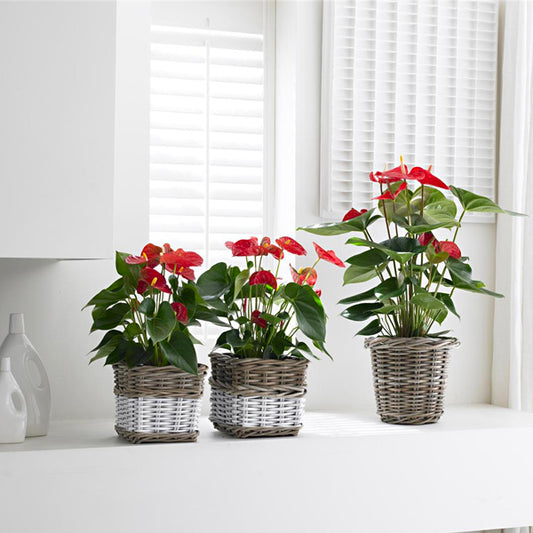Cattleyas are a diverse group of sympodial orchids and include associated genera like Brassavola, Laelia, Schomburgkia, Broughtonia, and Sophronitis along with their hybrids. They are one of the most popular groups of orchids simply because they have huge, colourful fragrant flowers on compact plants enabling them to be grown successfully even if the hobbyist only has as little space as a windowsill. With today's nuclear families opting to live in apartments, cattleyas have turned out to become the orchids of choice.
Light : Cattleyas should ideally be grown under shade nets providing 30-40% shade. With this amount of light, the leaves should be a medium green. Too much light can turn the leaves yellow while too little light can cause the leaves to become dark green. Light is essential to help convert fertilizer into food for the plant as well as to promote blooming. In the tropics, the light is high and so are the temperatures.
Water : Cattleyas have pseudobulbs which can store adequate amounts of food and water and can therefore, be allowed to go dry between waterings. Watering should be decided by the type of pot used. A clay pot will dry up faster than a plastic pot and will, therefore, need more frequent watering or good levels of humidity around. Kiwi Pine Bark - Big Chips is the best medium to be used for Cattleyas. Those grown in water-retentive media like coconut husk can be watered less often compared to media like Pine bark or LECA pebbles. In areas that experience dry summers, a misting setup would be beneficial. Watering should be scaled down in places with cold winters as plants reduce transpiration. Higher temperatures require more watering and so does a windy location.
Temperature : Cattleyas can tolerate a wide temperature range between 10 to 35 degrees Celsius. High temperatures during summer can be controlled by watering them during the hottest part of the day and increasing air circulation around the plants. Cattleyas cannot tolerate frost, so it would be ideal to move your plant indoors especially during the night in places that experience a very cold winter. Ensure that your plants are dry by night on very cold nights.
Humidity: Cattleyas being epiphytes are found in high humidity zones in the wild. In such a setup the humidity varies between 50-100% at various times of the year. Humidity can be increased by either misting your plants if you have a greenhouse setup or placing a pebble-filled tray beneath the pot filled with water if your plants are on a balcony or windowsill. Ensure that water from the tray does not enter the pot.
Potting and Media : Kiwi Pine Bark is the best medium to be used for Cattleyas. During the growth stage, Cattleya should be fed a high nitrogen fertilizer like Speciality Bio 20 at 3 ml/L of water 4 times a month. While Matured cattleyas can be fed with Basfoliar 19-19-19 fertilizer once a week & Basfoliar 13-40-13 fertilizer at 3g/L once a month for good results.

